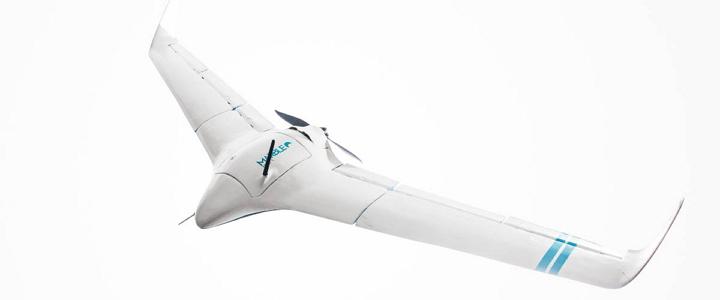
Aerospace engineer Mathieu Johnsson, the designer of the MRB-1, has an ambitious goal. He wants to develop a commercial, unmanned aerial vehicle capable of capturing 2D and 3D maps. He and four fellow engineers joined forces to put together Marble, the group’s startup company.
Johnsson currently works for Airbus where he’s responsible for ensuring the structural integrity of a wide range of components. He says his personal focus is on developing software to automate specific processes, increasing efficiency and reliability studies. He also worked on a record-breaking electric aircraft design – the Teaco project – and investigates unmanned aerial vehicle research and additive manufacturing technologies. He was a volunteer on that project which aims at creating the overall design of a single seater electric aircraft to beat the world speed record.
As for the MRB-1, Johnsson says he and his team printed a full compliment of custom parts for their drone, and those parts included an engine housing, winglets and a scaled-down version of the entire drone which helped them visualize the end product. The Marble MRB-1 also boasts custom, flush mounting screws, internally braced wingtips, and an engine mount designed to save weight and preserve the stiffness of the craft.
Cameras mounted beneath the drone will be capable of capturing customized, high fidelity maps in the field, and Johnsson and his team used a Form 1+ printer from formlabs to build their prototypes.
“We can now produce exchangeable modules – thanks to the geometrical accuracy – without the need for molded parts,” Johnsson says. “It gives us the possibility to manufacture small batches of early-version product that we will sell to customers before committing to manufacturing methods more optimized for larger scale production. For most parts, we may not be able to manufacture them any other way, without compromising on weight or functionality.”
He adds that prototyping with 3D printing enables the Marble team to create short runs of complex fixtures and fittings which saves on the cost of creating the expensive tooling which would otherwise be necessary to build them.
“Whatever design we make, we only need a few hours to have it manufactured with the Form 1+,” Johnsson says. “This helps designers try unconventional or risky ideas, without hours of preliminary analysis.”